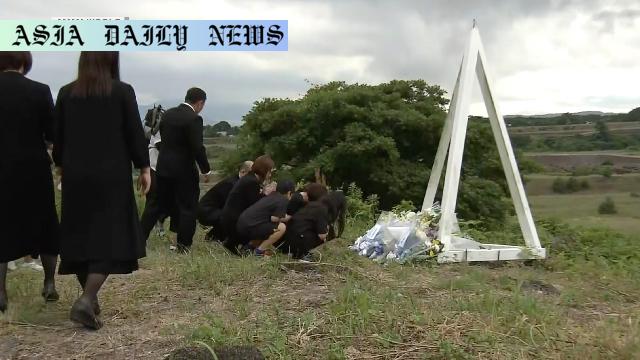Volcanic Disaster: Families and reporters mark 34 years since Mount Unzen’s tragedy, emphasizing lessons in safety and courage.
Key Point 1: The tragic volcano eruption from Mount Unzen in Nagasaki Prefecture killed 43 individuals in 1991.
Key Point 2: Victims included journalists, volcanologists, and their taxi drivers who were monitoring volcanic activity.
Key Point 3: 34 years later, families and observers commemorated the site with prayers and moments of silence.
Key Point 4: Insights from surviving family members emphasize safety and the importance of prioritizing life in hazardous professions.

Reflecting on Mount Unzen’s Pyroclastic Tragedy
On June 3, 1991, an unforgiving pyroclastic surge, carrying volcanic gases and hot debris, tore down from Mount Unzen’s Fugen Peak, devastating surrounding areas in Nagasaki Prefecture, Japan. The tragedy claimed 43 lives, including those of journalists, volcanologists, and their taxi drivers. These individuals had gathered at a well-known observation point renowned for its vantage views of volcanic activity when disaster unfolded.
Tuesday marked the 34th anniversary of this disaster, a day solemnly observed by families, loved ones of the victims, and journalists who gathered at the site. At exactly 4:08 p.m., the moment the fatal pyroclastic burst occurred, participants observed a solemn moment of silence. Prayers were offered by many towards the imposing volcano, reflecting the enduring pain and poignant memories of those affected.
The Emotional Testimonies of Surviving Families
Komura Tetsuya, whose brother Koji—a dedicated videographer for Nippon TV—lost his life during the eruption, offered a moving perspective during the remembrance. Watching cameras that bore resemblance to his late brother’s equipment evoked powerful emotions. Koji, alongside other reporters, had been documenting the unfolding events and reportedly captured footage until his final moments.
Crucial Lessons in Crisis and Safety
For Komura and others, the lessons borne from this grim event extended beyond remembrance. He fervently emphasized that the sacrifices of reporters are rendered futile if their safety is imperilled. In honoring both the courage of investigative professions and the importance of prioritizing self-preservation, the disaster serves as a critical reminder of balancing pursuit of truth with life-preserving measures.
A Broader Implication of Nature’s Might
This event also sheds light on the intricate—and often volatile—relationship between humanity and nature. The eruption raised awareness, not only about volcanic unpredictability but also about the need for improved observation technology and safety protocols. The sacrifices of those 43 individuals continue as a beacon for disaster preparedness and a steadfast respect for natural forces.
Visitor Insights and Hope for Future Generations
As more visitors gather each year to honor the lost, the hope is that their stories help inspire better safety practices globally. Komura expressed his wish for volcanic observers and future scientists to carry forward a deep understanding of this disaster’s lessons. He reiterated the paramount importance of valuing human life amidst any scientific or journalistic endeavor. This perspective resonates widely and remains essential in today’s dynamic world imperiled by environmental challenges.
Commentary
A Tragic Milestone of Resilience and Lessons
The 34th anniversary of the volcanic disaster at Nagasaki’s Mount Unzen brings forth a tapestry of emotions—grief, resilience, and a profound salience of the lessons derived. Observing and remembering this historic day, we are reminded of the immense power of nature and the courage of individuals who braved perilous terrains to bring insight and knowledge to society.
Reflection on Human Resilience
Komura Tetsuya’s reflection on his brother Koji’s tragic loss evokes a raw yet inspiring sense of humanity. Hearing his poignant words, particularly his emotional recognition of reporters’ efforts and the need for prioritizing safety, amplifies the value of lives sacrificed for knowledge. The efforts of these individuals enrich global understanding, and their legacy serves as a stark warning about the unpredictable forces practitioners must prepare for.
Lessons Beyond Borders
While the tragedy unfolded in Japan, its implications remain genuinely global. The emphasis on balancing risk-taking for exploration with a cautious optimism resonates with communities dependent on journalism, science, and natural resource monitoring. The intrinsic unity of families and visitors commemorating this day highlights the universal reverence for those who tread the thin line between daring inquiry and life preservation.
A Call to Action
This event’s significance as a cautionary tale extends beyond volcano studies. It calls for the global community to equip specialists with safer observation facilities and technologies. It beckons us to advance preparation measures, ensuring such disasters bring fewer casualties in the future. In such collective action lies the homage most befitting the memory of the 43 lives lost—a legacy fueling hope and actionable awareness.


